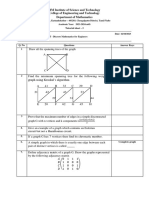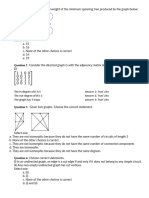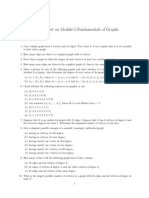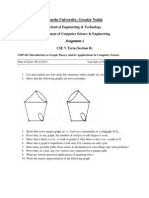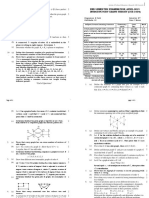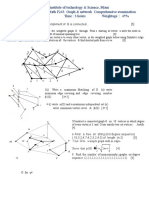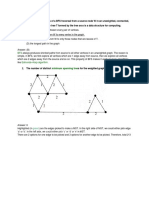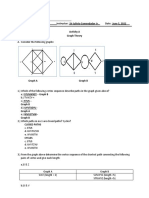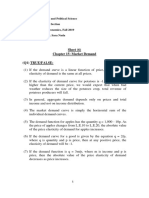0% found this document useful (0 votes)
20 views5 pagesDM Tutorial 07
The document is a tutorial for a Discrete Mathematics course, focusing on various types of graphs and their properties. It includes tasks such as classifying graphs, creating graphs from representations, identifying vertices, determining degrees, and finding adjacency matrices. Additionally, it covers concepts like Hamilton circuits, trees, and spanning trees using depth-first and breadth-first search methods.
Uploaded by
upekshawaragoda1Copyright
© © All Rights Reserved
We take content rights seriously. If you suspect this is your content, claim it here.
Available Formats
Download as PDF, TXT or read online on Scribd
0% found this document useful (0 votes)
20 views5 pagesDM Tutorial 07
The document is a tutorial for a Discrete Mathematics course, focusing on various types of graphs and their properties. It includes tasks such as classifying graphs, creating graphs from representations, identifying vertices, determining degrees, and finding adjacency matrices. Additionally, it covers concepts like Hamilton circuits, trees, and spanning trees using depth-first and breadth-first search methods.
Uploaded by
upekshawaragoda1Copyright
© © All Rights Reserved
We take content rights seriously. If you suspect this is your content, claim it here.
Available Formats
Download as PDF, TXT or read online on Scribd
/ 5

